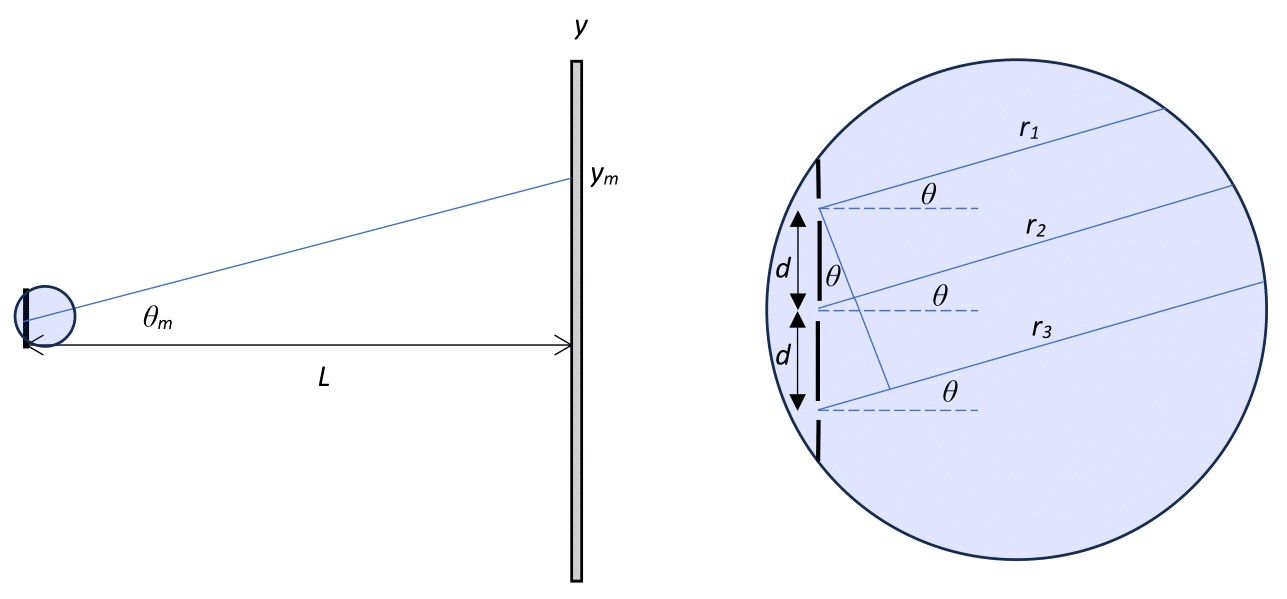1. Central Maximum.
First consider the central maximum.
-
What is the path length difference between ray \(r_1\) and \(r_2\text{?}\)
-
What is the path length difference between ray \(r_2\) and \(r_3\text{?}\)
-
What is the path length difference between ray \(r_1\) and \(r_3\text{?}\)
-
Is this a point of constructive or destructive interference?
-
How does this affect the intensity of the light?
Answer.
The path length difference between all three rays is zero. The reason for this is because the central maximum lies at the center of the screen at an angle of \(\theta = 0\text{.}\) Therefore, the path length difference is zero. This means that the central maximum will be a point of constructive interference. With the added light coming from the third slit, the intensity of the central maximum increases.

